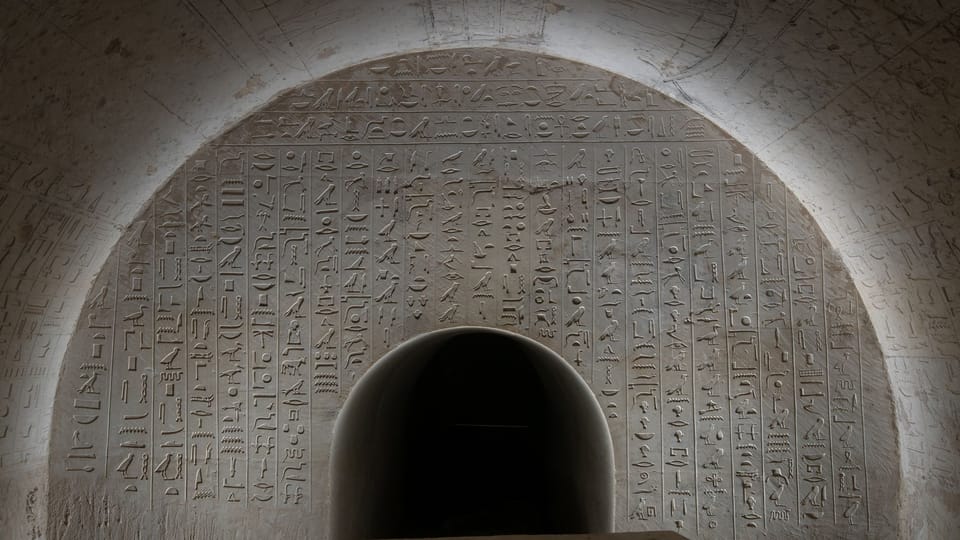
Photo: Petr Košárek, © Český egyptologický ústav FF UK
Czech Egyptologists have made another important discovery in Abusir – the roughly 2,500-year-old tomb of a young royal scribe. Together with other recent archaeological finds in the area, this newly discovered tomb gives researchers a better understanding of the changes that took place in Egypt and the surrounding area in the 5th and 6th centuries BC.
The tomb of the hitherto unknown dignitary, a certain Djehutyemhat, dates from the time of the Persian invasion of Egypt. Only the shaft, the part of the tomb below ground, was found preserved, at the bottom of which, at a depth of 14 metres, lies a burial chamber built of limestone blocks. Inside the burial chamber is a large stone sarcophagus, covered with relief decoration bearing hieroglyphic inscriptions and depictions of Ancient Egyptian gods.
The medium-sized burial chamber, measuring 3.2 m long, 2.6 m wide and 1.9 m high, is itself also decorated with inscriptions and drawings, as Ladislav Bareš from the Czech Institute of Egyptology details.
“The burial chamber is decorated in the usual style of the time for important dignitaries, even though this person was only a middle-ranking clerk. There are inscriptions that were meant to help ease his journey into the afterlife and guarantee him eternal bliss. They are almost exclusively religious texts, but there are also the names of his parents and specific formulations, for example a set of sayings which were supposed to protect him from snakes.”
Interestingly, the snakes mentioned in these magical texts represented both potential danger and powerful protection for the deceased. However, the inscriptions were unfortunately not able to protect the tomb completely – Djehutyemhat’s burial chamber was almost empty when it was discovered, as like other tombs in this area, it had been robbed sometime around the 5th century AD.
See the rest here.
Authors: Anna Fodor, Hanka Shánělová, Sources:Univerzita Karlova,iROZHLAS.cz

